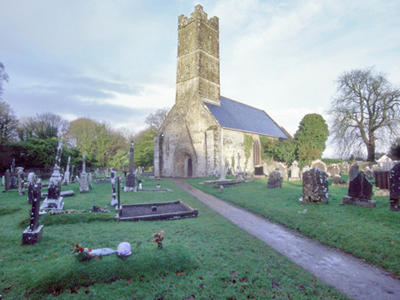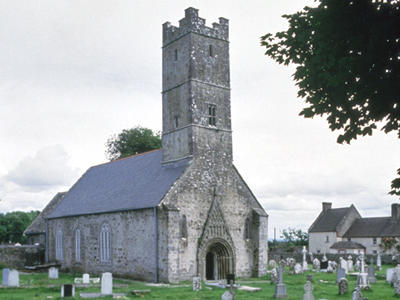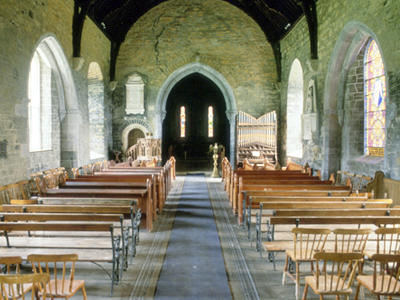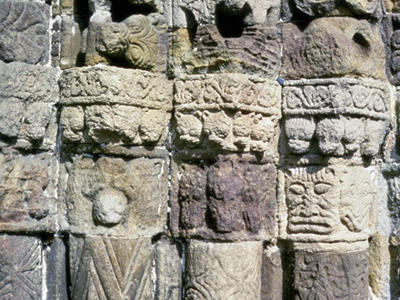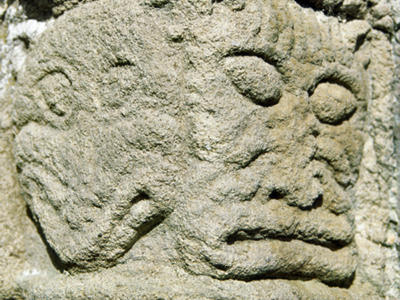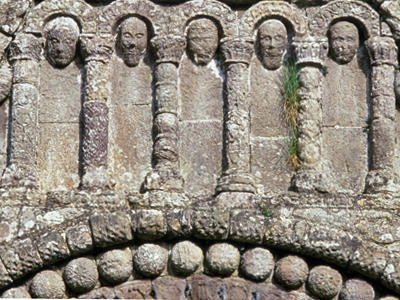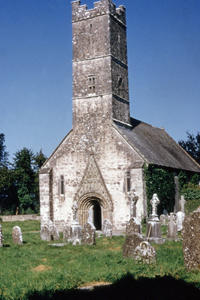Saint Brendan's Cathedral
Clonfert Cathedral, also known as St. Brendan’s Cathedral, is a twelfth-century Hiberno-Romanesque structure on the site of Saint Brendan’s sixth-century monastery in Clonfert, Ireland. Although the building currently serves a Church of Ireland congregation, Irish Protestants and Catholics share interest in preserving this relic of their common cultural heritage. The stone edifice is distinguished by its portal and sandstone doorway, acknowledged to be the finest of its type in Ireland. The doorway is centered amid an exuberantly carved series of recessing arches featuring geometric, zoomorphic, and Celtic designs, above which are found several carved heads. The soft sandstone structure has weathered severely. Earlier conservation efforts, which did not fully address all the building’s problems, as well as substantial biological growth, have compounded the deterioration. The cathedral is now the parish church of a dwindling congregation with minimal resources to repair the building without outside assistance.
2000 World Wonuments Watch
The Heritage Council of Ireland conducted a detailed conditions survey and planning study of Saint Brendan's. Several actions, including removal of past repairs and organic growths, and repointing of stones, were suggested. On its own, the small congregation could not afford the necessary repairs suggested by the preliminary survey and required additional expertise to carry out the conservation program. The site was included on the 2000 World Monuments Watch and WMF, with support from American Express and the Robert W. Wilson Challenge to Conserve Our Heritage, supported restoration efforts in 2003.
Founded by Saint Brendan, known as "the navigator" because of his legendary voyage across the Atlantic Ocean in the sixth century, the cathedral at Clonfert functioned throughout the Middle Ages as a vibrant monastery. The compound was expanded and completed around 1164 in the Hiberno-Romanesque style; characteristic decorations include abstract geometric patterns, dense curvilinear forms, zoomorphic figures, and traditional Celtic designs. Saint Brendan’s Cathedral marks an important moment in the development of Irish architecture and design. The west portal is considered one of the finest examples of twelfth-century carving in Ireland. Various educational and narrative values of the site, in combination with the prototypical interior design, make the cathedral equally valuable to Ireland’s national history and the broader history of art.

